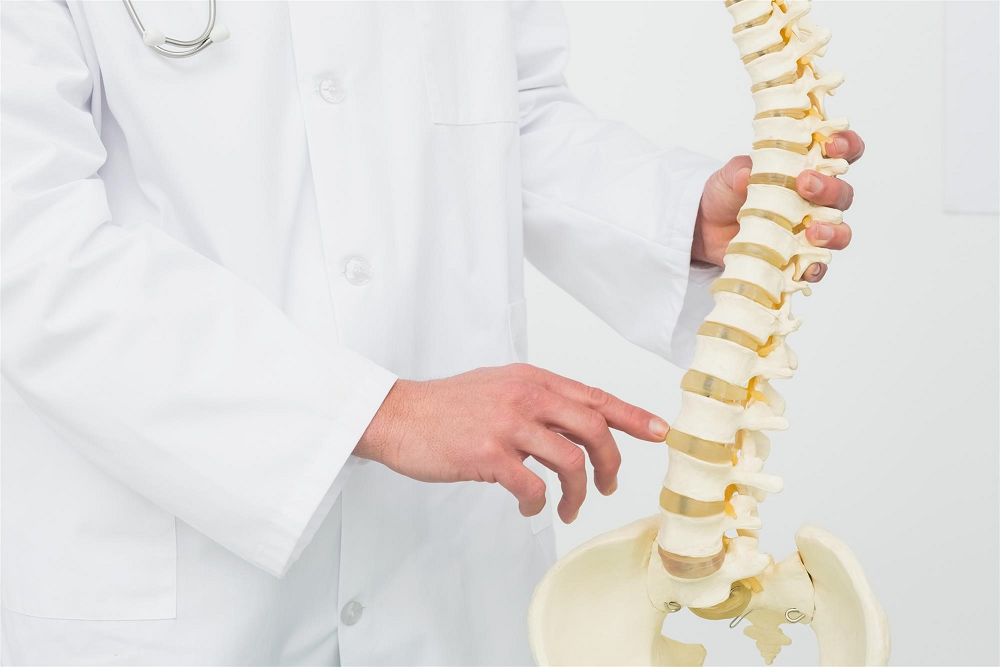
For many people with back pain conditions like herniated discs or sciatica one possible solution is spinal decompression. As the name suggests, spinal decompression relieves pressure on the spine including discs and nerves, allowing more oxygen and nutrients to reach those areas. Not only does this treatment help speed up the healing process of any damaged tissue, but it also provides pain relief by easing pressure on pinched nerves or misaligned spinal structures.
There is still ongoing research into the effectiveness of spinal decompression, but there is considerable hope for this therapy. According to one study that examined results from 39 patients, 86 percent of those with herniated discs had good or excellent results from spinal decompression sessions. Another study found that 71 percent of patients with lower back pain had positive pain relief outcomes.
These are limited studies and, obviously, do not indicate positive outcomes for all back pain patients. Although your doctor may recommend spinal decompression for your lower back pain, you should discuss it thoroughly if you have any of the following conditions:
- Pregnancy
- Vertebrae fracture
- Spinal fusion
- Spinal implant
- Previously failed back surgery
- Spinal stenosis
- Osteoporosis
- Spinal infection
- Spondylolisthesis
- Spinal tumor
- Obesity
- Advanced age
What Is Spinal Decompression Therapy?
Spinal decompression therapy may be surgical or non-surgical but is essentially any treatment that relieves pressure on spinal components. These therapies may be provided by medical doctors, chiropractors or osteopaths.
The non-surgical form of spinal decompression typically involves a patient lying on a motorized table with the lower limbs harnessed to the movable lower half of the table. This mobile half is gently moved to stretch the spine. A typical course of spinal decompression therapy includes 15 to 30 treatments over a four to six-week period. Some providers may also include other therapies in each session including heat or cold therapy, electrical stimulation or ultrasound.
There are also several surgical options for relieving pressure on the spine:
- Discectomy—many people suffer pain when a spinal disc—the connective tissue found between spinal vertebrae—is torn or misaligned. This bulging disc may rub against the spinal cord, causing pain, numbness or weakness. A discectomy is a surgical procedure that removes a part of the problem disc to provide spinal pain relief.
- Laminectomy—some people may suffer from irregularities in the spinal lamina due to herniated discs or spinal stenosis. Lamina are the bony structures on the spine that anchor and protect the spinal cord. If there is a nerve impingement, surgeons may cut away a part of this bone to relieve pressure.
- Foraminotomy—another form of spinal decompression surgery is a foraminotomy which enlarges the bony spaces that allow nerves to join with the spinal cord. If the spine becomes compressed, these neuroforamen may shrink and press on nerve roots. A foraminotomy will excise the bony or tissue blockage in the neuroforamen that is pressing on the nerve.
- Corpectomy—if you are suffering from spinal stenosis (a narrowing of the spinal canal) or myelopathy (injury to the spinal cord), then a corpectomy procedure may provide some spinal pain relief. During the procedure, the entire vertebra and discs are removed and replaced with a graft that has a larger space for the spinal nerves. Multiple vertebrae may be replaced during a single procedure.
- Superion – another option for treating spinal stenosis, Superion implants act as an indirect decompression device. Its anatomic design provides optimal fit and preserves a patient’s anatomy and ability to maintain motion. Superion acts as an extension blocker, relieving pressure on the affected nerves in the manner that one would achieve relief in a seated or flexed position. Available in multiple sizes to accommodate varying patient anatomy, Superion ensures controlled movement and minimizes post-procedure complications. Superion was developed to provide patients with a safe and effective alternative when conservative treatment has failed and laminectomy is too aggressive.
Depending on your health condition, more than one of these techniques may be applied in a single surgical session.
There are risks involved in any spinal decompression surgery, so you should only consider such an option after more conventional treatments have proven ineffective. These risks may include:
- Infection
- Nerve damage
- Bleeding
- Blood clots
- Scar tissue
- Stroke
- Anesthesia complications
Due to these potential risks, your doctor will take into consideration your age, back pain condition, and general health before recommending any major surgery. There is also no guarantee that a spinal decompression surgery will provide long-term pain relief.
Is Spinal Decompression Right for You?
Upon first hearing about surgical or non-surgical spinal decompression, you may be optimistic about its potential benefits. Before you enter a course of spinal decompression treatments, however, there are several things you should consider:
- Back condition—there are only certain types of health conditions that may be treated with spinal decompression. These conditions typically involve a herniated disc that is pressing on a nerve like sciatica.
- Limited success rate—depending on the study, spinal decompression has a good but not outstanding success rate. One study suggests that there is an 86 percent chance that non-surgical spinal decompression will offer some spinal pain relief for herniated disc patients, and that there is a 4 percent chance of reoccurrence within a year.
- Cost—non-surgical spinal decompression may take up to 30 treatments with each session costing from $30 to $200. The total cost of a course of treatment may range from $450 up to $6,000. Your insurance may cover some of these costs, but it is important to note that most insurers do not cover non-surgical spinal decompression therapy.
- Recovery time—if you opt for surgery, then you should know that you will likely be in the hospital for about five days and may be confined to your home for 3 to 4 weeks. There is significant rehabilitation following most spinal decompression procedures. Following your recovery, many of your back muscles will likely be weakened, so physical therapy will help strengthen them.
- Risks—there are relatively few risks associated with non-surgical spinal decompression, so many back pain patients find it worth trying. Since this is a drug-free therapy, it is a safer alternative to opioid pain killers. Surgical spinal decompression has many risks including infection, blood loss or nerve damage. You should also ask your physician if any other health conditions you may have might affect the outcome of the therapy.
There is no way to know beforehand if spinal decompression in its non-surgical or surgical form is an effective treatment option for you. You should carefully weigh the potential benefits against the costs and possible health risks before you make a decision.
Article written by: Dr. Robert Moghim – CEO/Founder Colorado Pain Care
M.D. Disclaimer: The views expressed in this article are the personal views of Robert Moghim, M.D. and do not necessarily represent and are not intended to represent the views of the company or its employees. The information contained in this article does not constitute medical advice, nor does reading or accessing this information create a patient-provider relationship. Comments that you post will be shared with all visitors to this page. The comment feature is not governed by HIPAA and you should not post any of your private health information.



